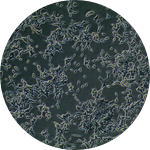About This Project
Inflammatory bowel disease (IBD) is a chronic intestinal disease that affects 3 million Americans. Animal models provide significant contributions to dissect the mechanism and develop novel therapeutic strategies. Large-scale and high speed live imaging of intestine can be uniquely performed on zebrafish. We propose to build a novel fish colitis model for studying host-pathogen interaction and drug screening in real-time. With your help, we would love to accomplish these work with our students.
Ask the Scientists
Join The DiscussionWhat is the context of this research?
Animal model systems are central to the discovery and development of new and better drugs for the treatment of human disease. The most used animal models in drug screening is the mice. However, mouse models are often costly at large scales, which limit their use in therapeutic screening. Zebrafish, on the other hand, produce thousands of progenies and are cost-effective to house. The transparency of the zebrafish larva allows us to image their gut overtime. We propose to establish live fish quantifiable staining matrices for measuring cell responses . Those matrices will be measured during infection with pathogenic bacteria known to be associated with IBD. We will perform IBD drug screening to evaluate the effectiveness of current IBD treatment.
What is the significance of this project?
Our human IBD genetic data shows that the specific mutations for IBD risk are implicated in innate immune cells and autophagy. Innate immune responses and autophagy are first line immune defenses in the intestine against bacterial infection. With the current colitis mouse and intestinal injury models, the measurement of inflammatory phenotypes usually relies on body weight loss and intestinal length decrease. These phenotype measurements require the accumulation of inflammation and damage over time. We decided to develop a novel method to measure host-pathogen interactions in live animal gut, and further study and validate the function of human IBD mutations and IBD drug response in our new model.
What are the goals of the project?
With the limitation of the current animal models, we propose to build a novel fish colitis model for studying host-pathogen interaction and IBD drug screening in real-time. Our first goal is to establish live zebrafish quantifiable staining matrices with lysosomal pH, autophagy and mucus thickness. Once the matrices is established, we will apply those matrices to measure the effect of bacterial infection in the zebrafish gut. Our final goal is to screen IBD drug using our newly developed zebrafish colitis/injury model.
Budget
Our main goals are establishing live zebrafish quantifiable staining matrices with lysosomal pH, autophagy and mucus thickness, applying those matrices to measure the effect of bacterial infection, and Screening IBD drug using the zebrafish colitis/injury model developed. We want to both achieve all these goals and provide a training opportunity for our summer students.
For both purposes, we need an extra dissecting microscope with light source and camera (Nikon SMZ-745 Stereo Zoom Microscope, MI-LED Fiber Optic Illuminator, Microscope Camera). A Cyto-ID kit, which is a specific dye for staining and quantifying the formation of autophagy. PHrodo E. coli Biopaticles, which are heat-killed E.coli labelled with pH sensing dye. We will use it to measure and quantify the bacteria that were ingested by host immune cells.
Endorsed by
 Project Timeline
Project Timeline
We plan to develop all the methods in next 8 months.
We will share the research progress and data directly with our backers through lab notes. We are seeking to publish our results in scientific journal.
Mar 26, 2018
Project Launched
Apr 19, 2018
Project Launched
Apr 26, 2018
Establish live zebrafish quantifiable staining matrices with lysosomal pH.
May 26, 2018
Establish live zebrafish quantifiable staining matrices with autophagy
Jun 26, 2018
Establish live zebrafish quantifiable staining matrices with mucus thickness
Meet the Team
Affiliates
Team Bio
Shikha Nayar, Ph.D. Candidate
https://www.linkedin.com/in/sh...
Joshua Morrison, Research Associate
https://www.linkedin.com/in/jk...
Ling-shiang (Felix) Chuang
https://www.linkedin.com/in/li...
I am a self-motivated and ambitious bioscience professional. Extensive hands-on research expertise in inflammatory bowel disease (Crohn's disease), embryonic development, cell, molecular and biochemistry. Strong scientific training from Icahn School of Medicine at Mount Sinai, Rutgers University, New York Univerisity and Taiwan University, professional expertise in experimental research, large-scale data analysis (CyTOF, sncRNAseq and ATACseq) and grant writing. Strong analytical, writing, communication and presentation skills.
I will oversee the entire project and will submit Lab Notes.
Past honors & Awards
- ASCB Annual Meeting Highlights- Bacterial infection and symbiosis 2018. https://www.molbiolcell.org/do...
- ASHG Trainee Paper Spotlight 2018. https://www.ashg.org/education...
- Presntation at 2017 ASCB/EMBO minisymposium 1: Bactrerial Infection and Symbiosis
- Winner of 8th Icahn School of Medicine at Mount Sinai (ISMMS) Postdoctoral Symposium DataBlitz 2017
- First place award at MSSM IBD Retreat 2017
- Media report: GM-CSF in CD: ignited interest from two large data sets? http://gut.bmj.com/content/66/...
- Reviewers’ Choice Award (top 10%) ASHG 2016. Imputation of gene expression implicates expected and unexpected genes associated to Crohn’s disease
- Reviewers’ Choice Award (top 10%) ASHG 2016. An Ashkenazi Jewish-predominant frameshift in CSF2RB increases risk for Crohn's disease and attenuates GM-CSF signaling
- Media report: CSF2RB mutation, common in Ashkenazim, linked to Crohn’s at PM360: The Essential Marketing Resource for Pharma Marketers. https://www.pm360online.com/cs...
- Media report: CSF2RB mutation, common in Ashkenazim, linked to Crohn’s at Internal Medicine News http://www.mdedge.com/internal...
Project Backers
- 15Backers
- 7%Funded
- $393Total Donations
- $26.20Average Donation


